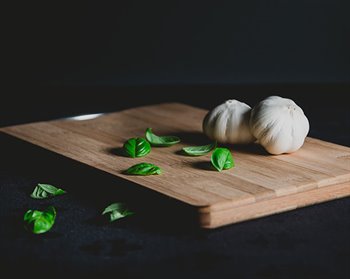
When it comes to cutting vegetables, or anything in general, the possibilities are endless. There are so many different ways to cut one thing that sometimes we don’t see the benefits of cutting them a certain way. If you’re looking to impress someone with chef-like cooking styles or simply learn about cutting vegetables in the proper way, take a look at these different ways that will add taste and style to your otherwise normal cooking. Make sure to use your new personalized NGrava wood cutting board.
Let’s start off with one of the easier cutting styles around, this technique is most commonly used as a way to cut leafy vegetables into small pieces that are easy to chew. Simply pile up some pieces of the vegetable being used and cut them into long, thin strips that aren’t too thick. Generally, this technique is used on vegetables such as lettuce, spinach, cabbage or also for herbs.
The first time you picked up a knife and cut a vegetable you most likely used this technique without even realizing it. It’s very easy, you simply slice your vegetable into flat, round discs. The width of the slice depends mainly on what you’re cooking but also on your likes. Common vegetables cut in this technique include onions, tomatoes and potatoes.
Also referred to as “the matchstick cut,” this particular style is one of the most complicated cutting techniques as you’re required to cut each piece into the same sizes. A julienne cut is when you cut your vegetable into long, rectangular pieces that appear square when you’re looking at it head on. It is primarily used when people are looking to cook their vegetables quickly. The most common vegetables cut in this style include celery, carrots, and potatoes.
If you’ve got the Julienne technique mastered, then this technique should be a breeze. Simply line up the vegetables you’ve cut into Julienne slices then, using your knuckles as a guide, cut approximately 1/8-inch cubes from the stick. While you can use this technique on any vegetable you’d like, it’s most commonly used on onions, carrots, celery and tomatoes.
Whether you’re looking to impress guests with properly cut vegetables, improve the tastes of your meals or simply improve your overall cooking ability, these 4 techniques will prove to be beneficial for anyone.